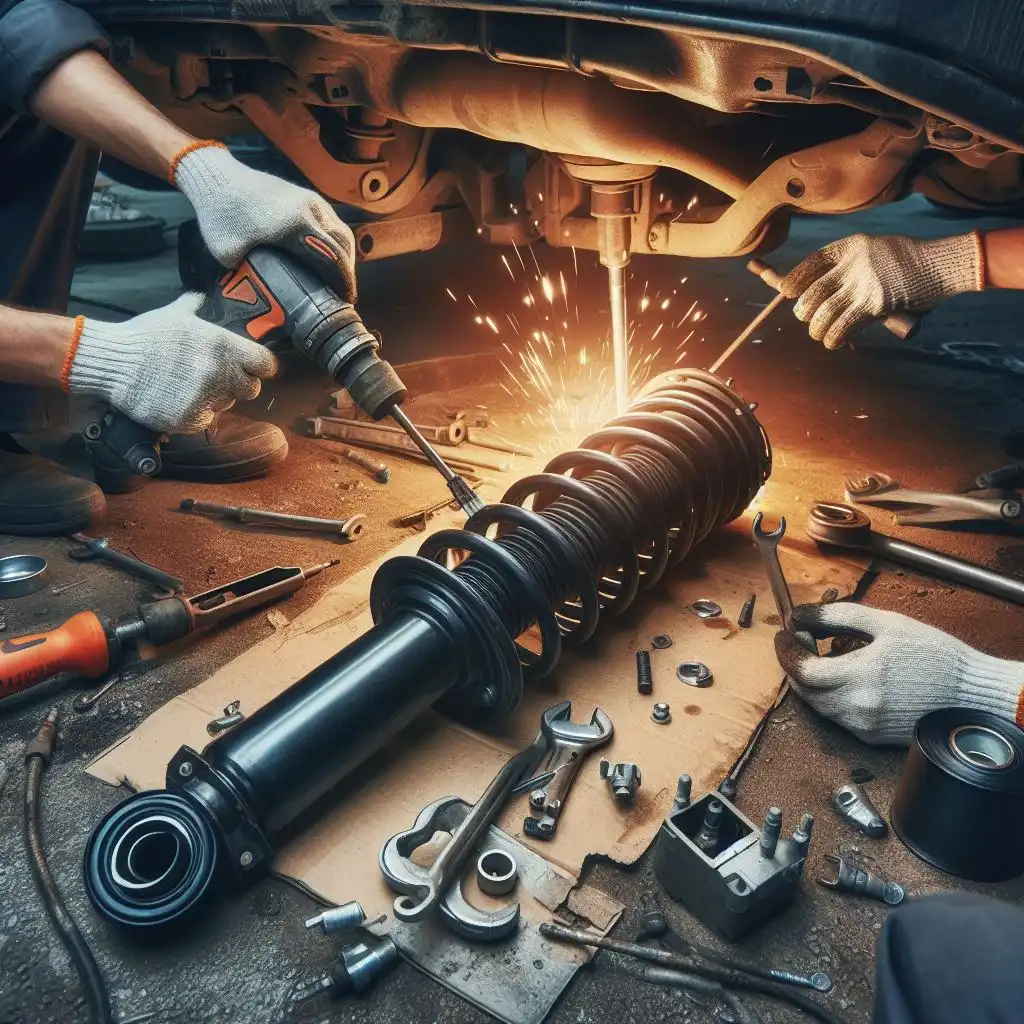The life of rear shock absorbers is one of the critical things that you should pay attention to. The rear shock absorbers of a car are one of the essential mechanical parts in the chassis that have a significant impact on the quality of driving and the safety of the passengers of a vehicle. As a result, the useful life of this spare mechanical part is significant, and car owners should know how long the rear shock absorbers will last.

The truth is that few car owners know the exact proper function of the rear shock absorbers of a car, and they need to know what this critical mechanical part of the chassis does. Among them, many people may need to learn how important it is to understand the rear shock absorbers lifespan in maintaining the safety of the vehicle and its passengers.
Anyway, keep in mind that, like all moving parts of a car, the rear shock absorbers will last in their lifespan, and these parts of vehicles also have their own specific helpful life and can wear out over time.
Rear shock absorbers lifespan of a car?
If we want to say how long the life of the rear and front shock absorbers of a car is, we should say that the answer to this question depends on several specific factors.
Shock absorbers should last about 50,000 miles or, in other words, 4 to 5 years for regular use of the car unless conditions arise that affect the useful life of the rear shock absorbers of the vehicle.
In fact, if you drive with caution and mostly observe the principles of maintaining the useful life of the vehicle, the durability of the rear shock absorbers of the car increases.
It may even reach more than the number mentioned, that is, 50,000 miles. The truth is that anyway, with the end of the useful life of the rear shock absorbers of the car, a considerable cost is imposed on you. Some factors, such as the safety of your driving and Your attention to the crucial points of car maintenance, can increase the useful life of these parts.
On the other hand, the existence of inappropriate environmental conditions may reduce their useful life, which forces you to replace these parts sooner and in a shorter period.

We have previously discussed the dangers of driving with a damaged rear shock and the potential risks that could affect your health and the useful life of your car’s performance; however, you should know that if you do not replace the rear shock absorbers in a timely manner, it may cause minor impacts to the chassis that cause the tire to bounce up and down and cause the complete contact of the tread with the pavement to be lost.
Remember, the part of the tire that touches the road is not much bigger than the palm of your hand, which makes stopping the car, especially at high speeds, more difficult because due to the less contact of the tire with the road surface, less friction is created. In the following, we have named some of the factors affecting the useful life of the rear and front shock absorbers:
Factors affecting the helpful life of shock absorbers

These factors are among the things that can increase or decrease the useful life of your car’s shock absorbers. As a result, you should pay attention to these things to increase the useful life of your car parts and put less cost on your hands:
Your driving style with the car

It doesn’t matter whether we talk about front shock absorbers or rear shock absorbers! In any case, your driving style with the car and observing the principles of maintenance is the most critical factor that affects the health of car parts. For example, if you drive recklessly and drive off the road, the useful life of your shock absorbers decreases.
The type of roads affects the health of your car.
Choosing smooth routes and healthier roads can help the life of all mechanical parts of the car, and this is not limited to chassis parts like shock absorbers. For example, suppose you drive more on rough or bumpy roads or do many hard drives, without a doubt. In that case, the useful life of your shock absorbers decreases, and you will need to refer to specialist mechanics for repair or replacement of front or rear shock absorbers sooner.
Avoid dangerous driving!

In many cases, the environment in which you live and its climate can also affect the useful life of this mechanical part. For example, suppose you live in areas where the shock absorbers are prone to rust and corrosion or live in a climate with severe temperature fluctuations. In that case, it may damage the internal seals of your shock absorbers and shorten their lifespan.
environment and climate
In many cases, the environment in which you live and its climate can also affect the useful life of this mechanical part. For example, suppose you live in areas where the shock absorbers are prone to rust and corrosion or live in a climate with severe temperature fluctuations. In that case, it may damage the internal seals of your shock absorbers and shorten their lifespan.
Signs of the end of the useful life of the rear shock absorbers

If you experience such signs while driving the car, be sure to refer to a specialist mechanic as soon as possible because it may be the end of the life of the shock absorbers, and your car may need to be replaced or repaired.
Unnatural wear effect: This tire and wheel
Bounces can also lead to uneven tire wear, which is called scalloping, which leads to wear of spotted parts around the outer edge of the tire. This issue may create many dangers for car occupants, decrease the useful life of your tires, and put more repair costs on your car.
Poor and uncontrollable handling
Your vehicle is driven gently and does not wear out the shock absorbers. Even hitting a small bump, pothole, or wave shape on the road can cause the steering wheel to vibrate and make controlling the vehicle difficult.
Strange noises come from the car.
Weak, worn, broken, or loose shock absorbers and installed bushings that are brittle or lost can cause severe cracking or breaking when driving over a pothole, going up a ramp slope, or turning. Installed bushings are made of rubber, silicone, or polyurethane. They act like a cushion, absorb vibrations, and prevent the metal parts of the shock from wearing to the car frame or the shock installation holes.
Excessive cabin vibration

When driving on bumps or rough roads, the oil in the shock absorbers converts vibrations into thermal energy and then eliminates that energy. Loss of power in this way reduces road vibration. A shock with weak sealing or low oil cannot reduce vibrations.



